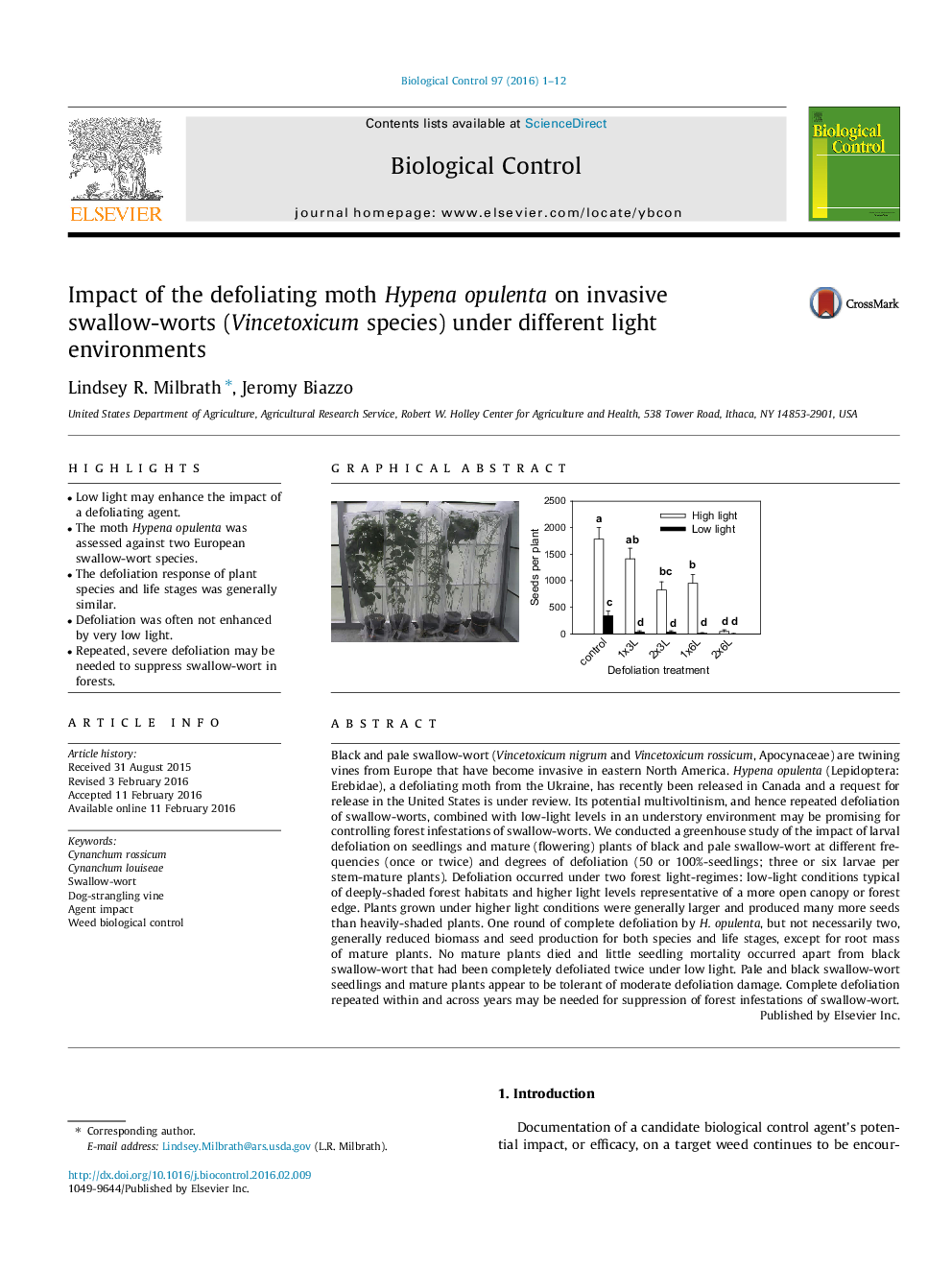| Article ID | Journal | Published Year | Pages | File Type |
|---|---|---|---|---|
| 4503681 | Biological Control | 2016 | 12 Pages |
•Low light may enhance the impact of a defoliating agent.•The moth Hypena opulenta was assessed against two European swallow-wort species.•The defoliation response of plant species and life stages was generally similar.•Defoliation was often not enhanced by very low light.•Repeated, severe defoliation may be needed to suppress swallow-wort in forests.
Black and pale swallow-wort (Vincetoxicum nigrum and Vincetoxicum rossicum, Apocynaceae) are twining vines from Europe that have become invasive in eastern North America. Hypena opulenta (Lepidoptera: Erebidae), a defoliating moth from the Ukraine, has recently been released in Canada and a request for release in the United States is under review. Its potential multivoltinism, and hence repeated defoliation of swallow-worts, combined with low-light levels in an understory environment may be promising for controlling forest infestations of swallow-worts. We conducted a greenhouse study of the impact of larval defoliation on seedlings and mature (flowering) plants of black and pale swallow-wort at different frequencies (once or twice) and degrees of defoliation (50 or 100%-seedlings; three or six larvae per stem-mature plants). Defoliation occurred under two forest light-regimes: low-light conditions typical of deeply-shaded forest habitats and higher light levels representative of a more open canopy or forest edge. Plants grown under higher light conditions were generally larger and produced many more seeds than heavily-shaded plants. One round of complete defoliation by H. opulenta, but not necessarily two, generally reduced biomass and seed production for both species and life stages, except for root mass of mature plants. No mature plants died and little seedling mortality occurred apart from black swallow-wort that had been completely defoliated twice under low light. Pale and black swallow-wort seedlings and mature plants appear to be tolerant of moderate defoliation damage. Complete defoliation repeated within and across years may be needed for suppression of forest infestations of swallow-wort.
Graphical abstractFigure optionsDownload full-size imageDownload as PowerPoint slide
